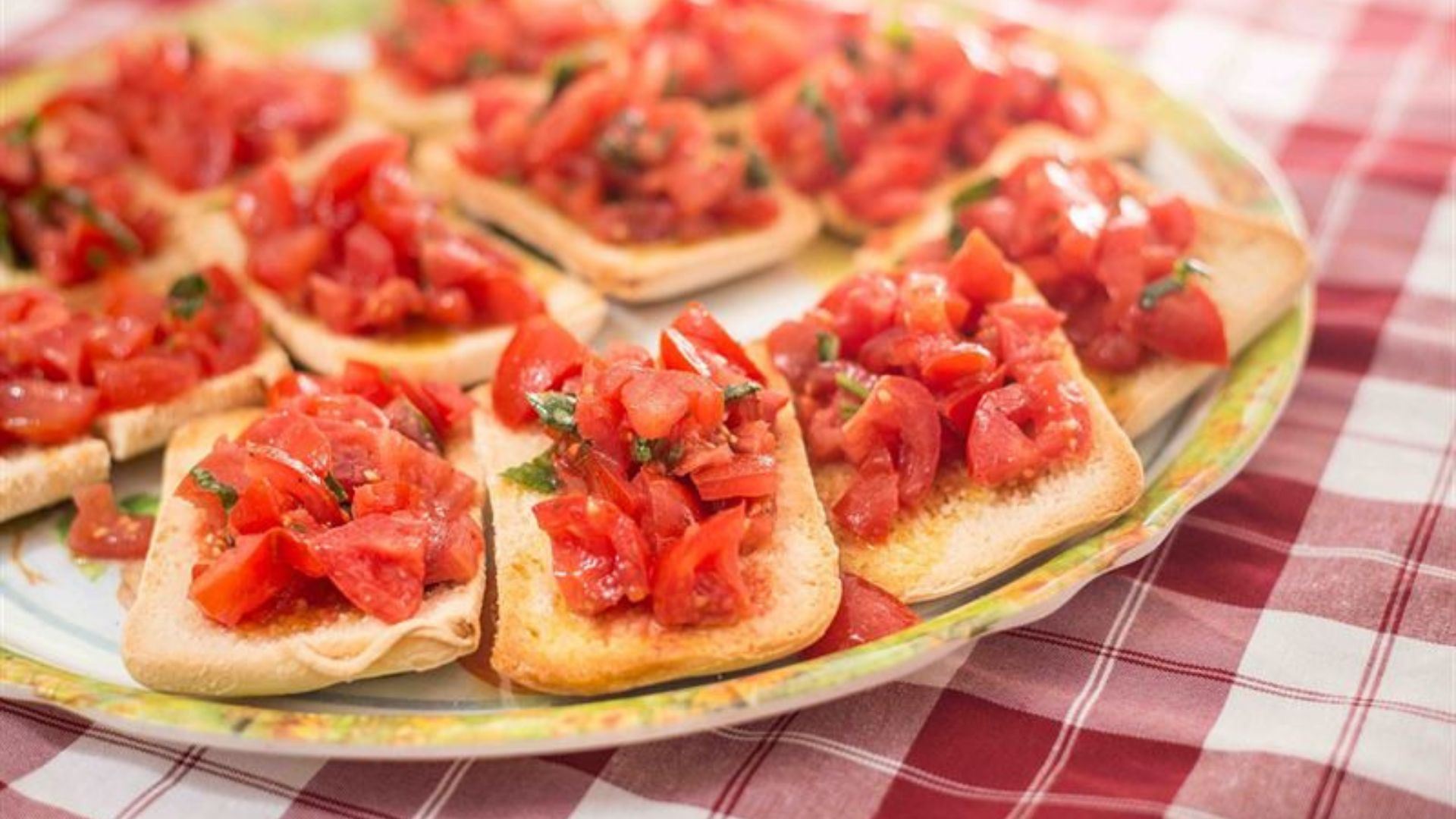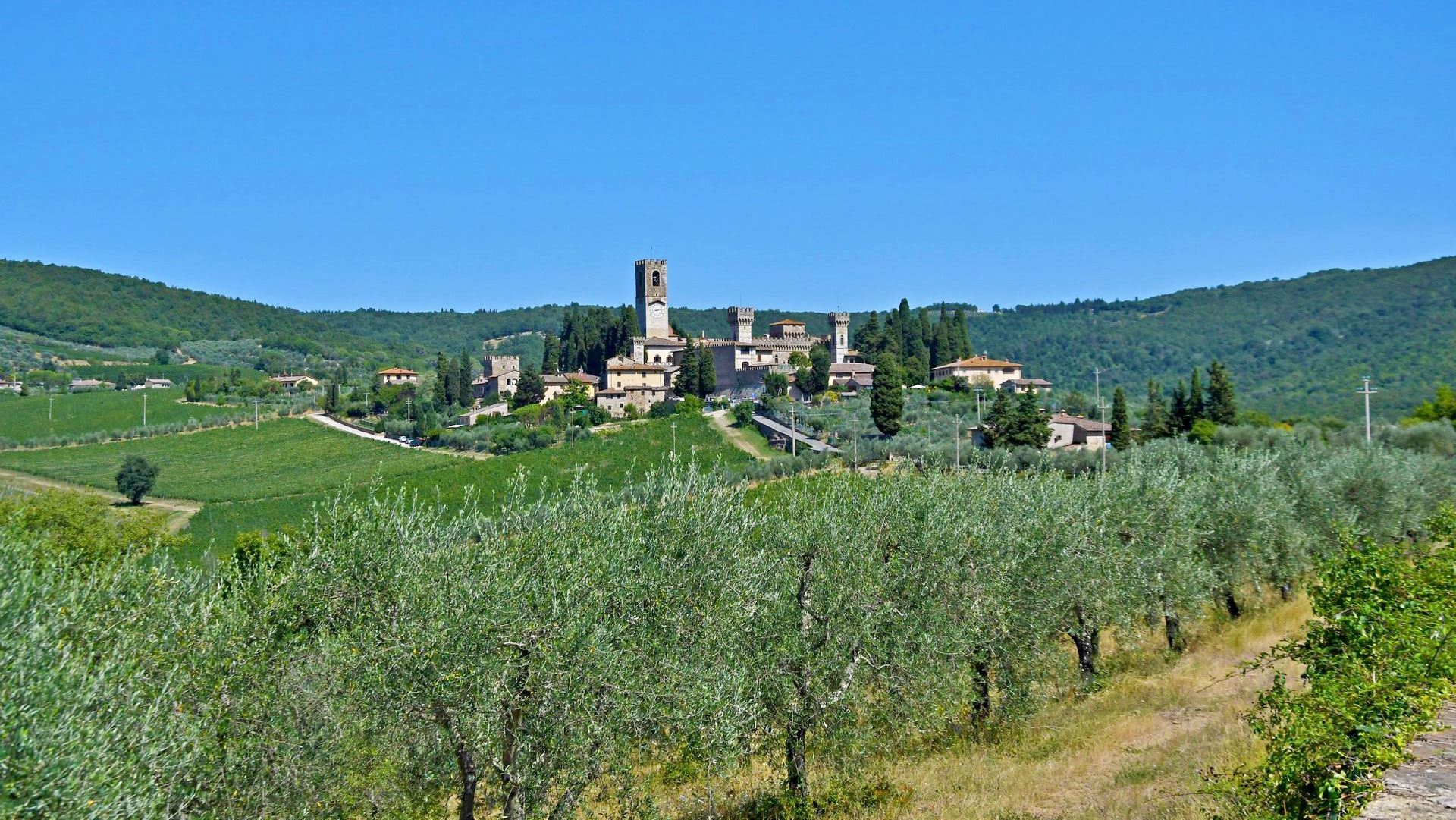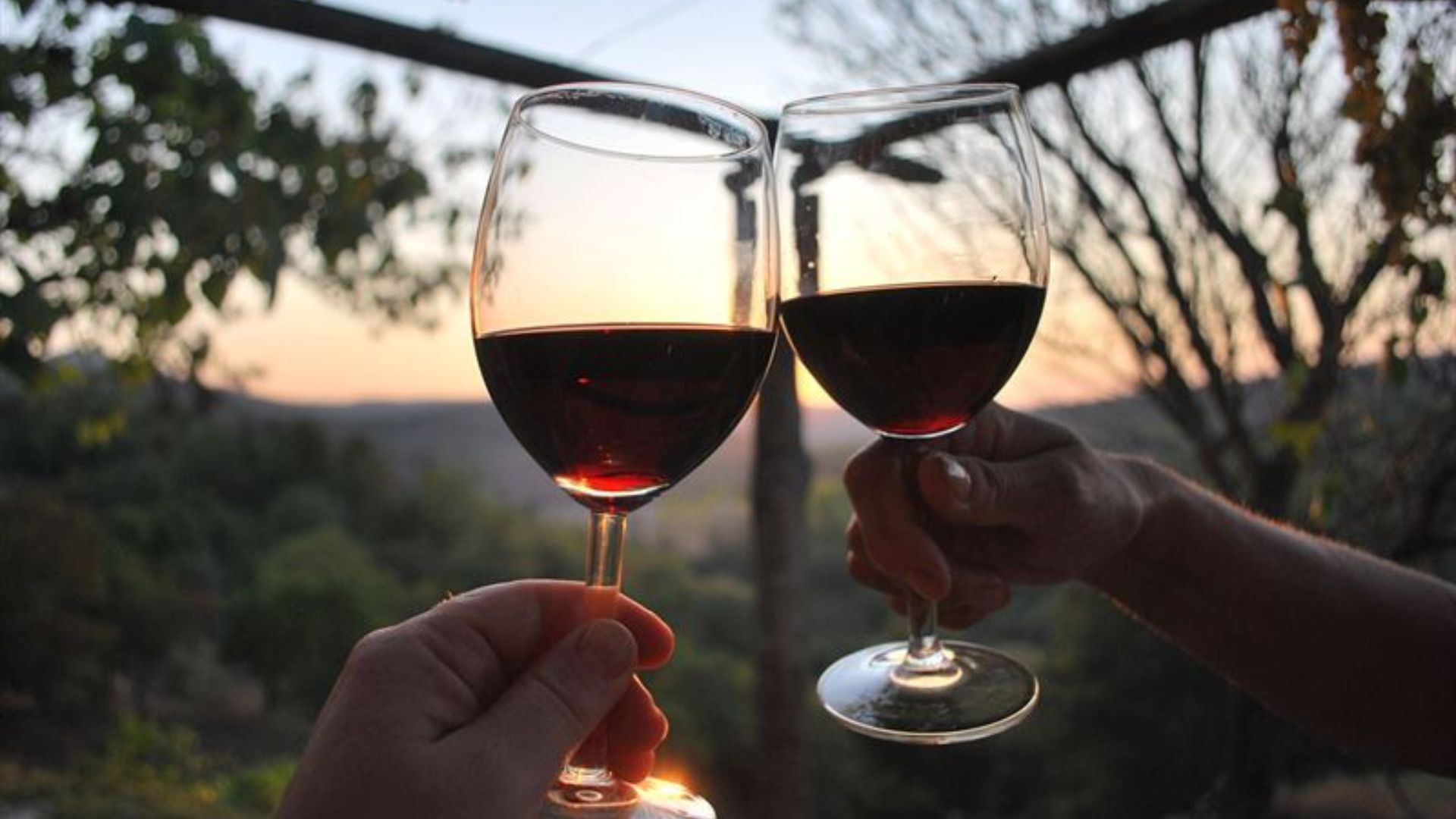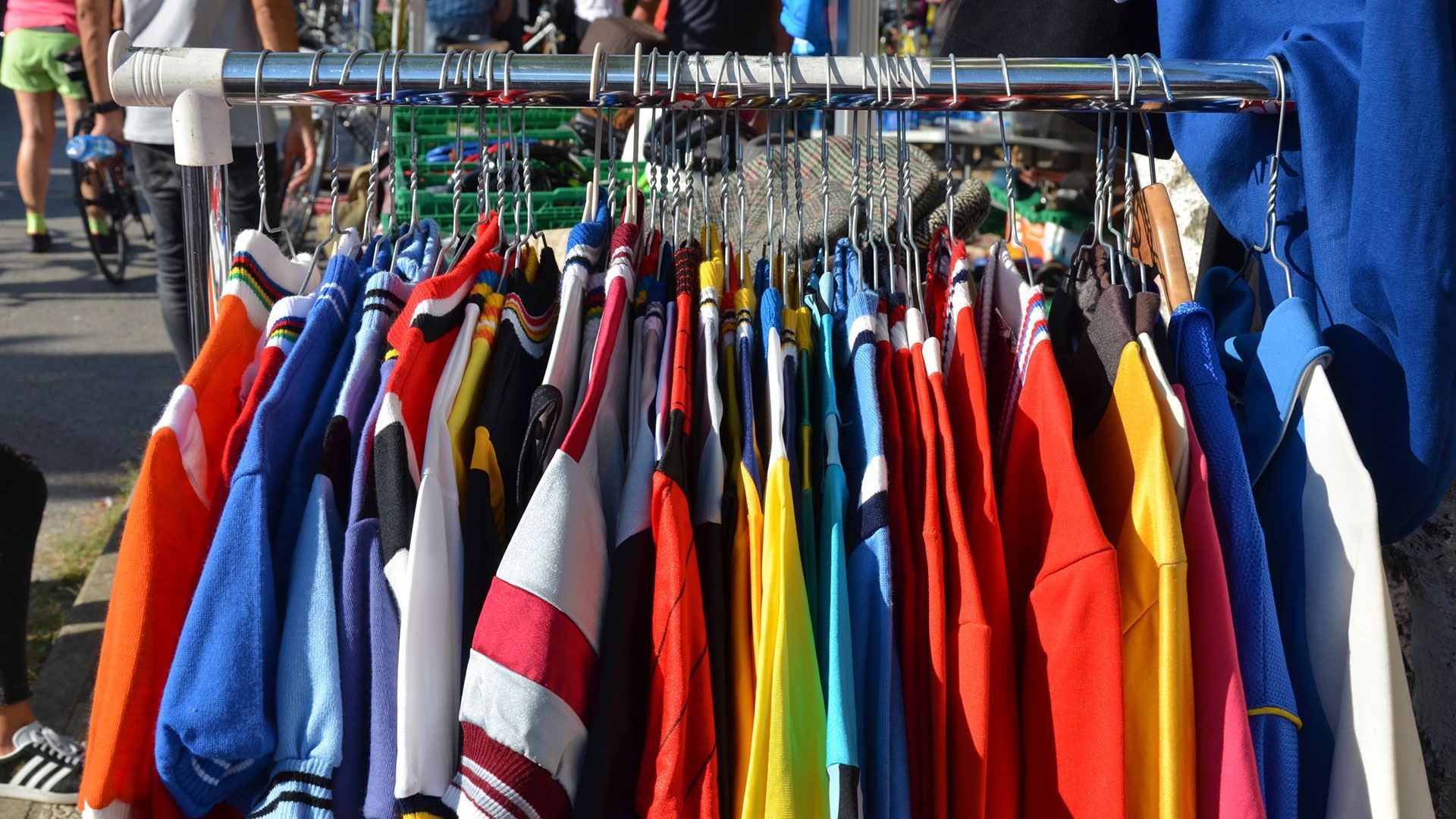The historic centre of hilltop Panzano unfolds along quaint alleys, bounded by a stretch of battered city walls. Medieval Panzano was a pawn between the feuding powers of Florence and Siena so constantly changed hands. Architecturally, this fortified outpost suffered during the conflict but vestiges of its medieval heart survive, though not its castle. A walk along the walls allows for scenic glimpses of the countryside. Restaurants lining the walls offer views of the Chianti hills and vineyards. Instead, the café-lined main square is the place for lapping up the small-town atmosphere and contemplating lunch. Modern-day Panzano is the preserve of Dario Cecchini, an eccentric celebrity butcher so a meaty feast forms part of the Panzano experience. But first turn your mind to loftier thoughts: the loveliest Romanesque church around. San Leonino, a romantic parish church, awaits on the next hilltop, a reminder that the Chianti can do churches, too.
Panzano
-
-
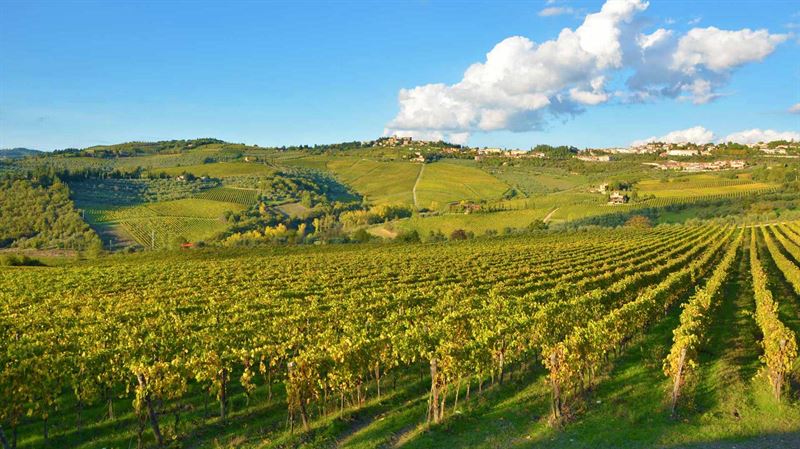
Top Ten Things to Do
Enjoy a meaty feast in Panzano, which is a restaurant hotspot, before embarking on wine trails in the Chianti hills nearby. Visit a Renaissance villa and gardens linked to Leonard da Vinci or fly over the Chianti in a hot-air balloon. More simply, enjoy a great circular hiking trail between Greve and Panzano, along with scenic drives to medieval castles and estates. Panzano, set more or less halfway between Siena and Florence, makes a great base for exploring both cities, as well as San Gimignano.
-

1. Panzano stroll, wine-tasting and meaty feast
Panzano is the place to indulge in a passion for Tuscan meat, including Florentine T-bone steak. On the food front, this Tuscan bastion belongs to Dario Cecchini, a cleverly eccentric celebrity butcher with a mini empire in these parts. No one can wield a bloody meat cleaver better, still less while reciting Dante. Part butcher, part showman, Dario keeps his audience entertained as well as over-fed.
Work up an appetite by strolling along the walls and admiring the Chianti countryside. Restaurants lining the walls offer views of the Chianti hills and vineyards.
The café-lined main square is the place for lapping up the small-town atmosphere and contemplating lunch. With several restaurants in town, all clustered round his famous butcher’s, Cecchini is still doing a brisk trade. The restaurants are fairly priced so there’s no sense of being caught in a tourist trap. The winning format appeals to most visitors, as does the conviviality and showbiz side. T-bone steak predominates, at least in L’Officina della Bistecca. For any beef-loving Tuscan, bistecca alla fiorentina – a huge, tender T-bone steak, grilled over an open fire and seasoned with nothing more than crushed peppercorns, salt, and a hint of garlic and olive oil, served very rare – is the ultimate steak. Bear in mind that all is not bleak for vegetarians: there are strong meat-free menus for those of a more squeamish disposition. Basic wine is included in the price but you can also bring your own.
After lunch, work off the calories by walking upto the Pieve di San Leonino, Panzano’s loveliest church, set on a hilltop just outside Panzano. Inside the Romanesque pieve are precious artworks, including della Robbia terracotta tabernacles and a medieval triptych of the Virgin and Child.
Address: Via XX Luglio, 11, 50022 Panzano In Chianti (Fi)
Tel: 055 852020
Web: www.dariocecchini.com -
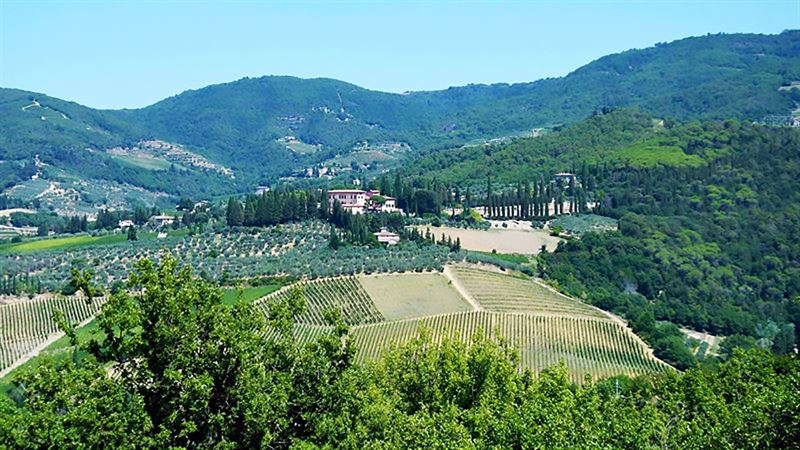
2. Vignamaggio – Renaissance villa estate and gardens
This Renaissance villa estate is linked to great art. Set around 5 km north-east of Panzano, the wine estate is delightful enough to have starred as a film set, based on Shakespeare’s Much Ado About Nothing. The romantic villa lords over its Italianate gardens and vine-clad hills. The serene landscape supposedly inspired Leonardo da Vinci. The castle was remodelled as a patrician villa in the 14th century and belonged to the Florentine Gherardini family. Monna Lisa Gherardini, better-known as Leonardo da Vinci’s Mona Lisa, married into this family in the 14th century. The villa boasts a crenellated tower, 16th-century corbelled arches and courtyard, with the top of the tower remodelled in Neo-Gothic style.
Centred on the lovely Renaissance villa, this tenuta is an established 65-hectare wine estate, and one of the oldest in Tuscany, dating back to 1404. The award-winning wines range from Chianti Classico and trendy Super Tuscans to a fresh Rosé, a Cabernet Franc, Vin Santo and grappa. Orchards, herb gardens, wheat-fields and thirty hectares of olive groves reflect the estate’s commitment to biodiversity. The villa grounds showcase Italianate, Renaissance-style gardens, complete with cypresses, clipped box parterres and rose-draped statuary. French owner and architect Patrice Taravella has recently spruced up the grounds, adding orchards, classical pool fountains and pergolas.
Vignamaggio now offers garden and cellar tours, as well as a free wine-tasting. The farm-to-table Ristorante Monna Lisa serves produce from the surrounding organic estate. Wine-pairing lunches are recommended, as are guided tours of the estate, ending in a sunset dinner. The seasonal menu celebrates Tuscan fare, from vegetable platters drizzled in home-produced olive oil to pasta with pistachio and garden-mint pesto. The pork and cured meats come from the estate's happy herd of cinta senese pigs.
Address: Via Petriolo 5
50022
Greve in Chianti
Tel: 055 8546624
Web: www.vignamaggio.com -
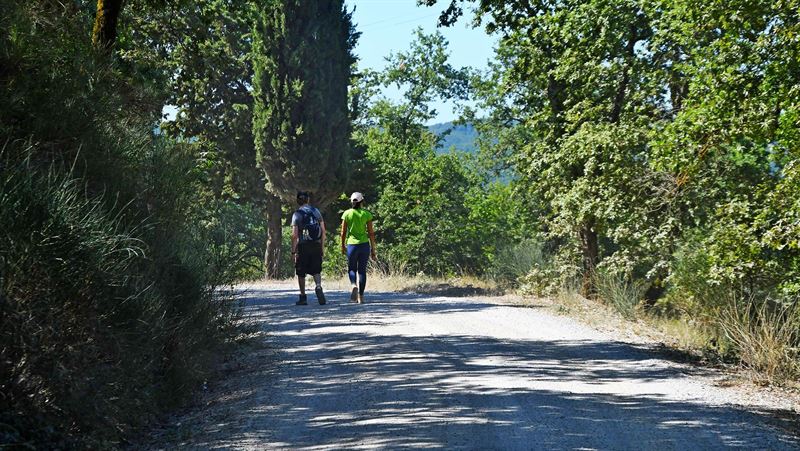
3. Greve to Panzano hiking circuit
A 14-km hilly hiking circuit from Greve in Chianti to Panzano and back forms a gentle loop that should take around five hours, not allowing for a lunch stop. However, a lunch stop is recommended in Panzano, at one of the places we suggest in our Eating & Drinking section. The map and full route description is visible at the link at the bottom so this is merely a summary. The route gives a sense of the Via Chiantigiana and its offshoots, passing farms, cypresses, olive groves and chestnut groves. Expect olive groves, gently rolling hills and dark cypresses standing sentinel.
From Greve, the first leg is a short, steep but rewarding 2km hike before reaching Montefioralle and its wonderful views. In Greve, take via Roma and via San Francesco to the medieval village of Montefioralle, passing through classic Chianti landscape. Although there are stretches of asphalted roads, these are generally peaceful and cypress-shaded. The winding route leads to the walled settlement, once the feudal castle, perched on the hill. Although no longer a military outpost, Montefioralle is still fortified. The walls were once octagonal, bounded by four gates, parts of which survive. The village was the birthplace of Amerigo Vespucci (1415-1512), who followed Columbus’ route to America. The explorer’s ancestral home lies along the main street, and is indicated by his coat of arms, incorporating a wasp. Wander along narrow alleys and secret passageways past well-preserved stone-built houses. Leg two of the hike then goes through silvery olive groves to Panzano, where you’ll probably stop for lunch. (See our suggestions below). Continue the walk back to Greve. Fortunately, leg three, the final leg, is all downhill. It takes you back to Greve through yet prettier countryside.
Web: www.visittuscany.com/en/itineraries/hiking-the-ring-route-between-greve-and-panzano/ -

4. Castellina in Chianti for a foodie foray
Visit neighbouring Castellina in Chianti, a charming haunt south of Panzano. Wander down via delle Volte, a quaint stone-vaulted street built into the side of the hill. Devour delicious ice cream at Gelateria Castellina, known for its experimental ices. The flavours range from ricotta and fig to chilli and chocolate or lemon and kiwi fruit. There’s also the owner’s favourite creation, cantuccini and Vin Santo: almond biscuits with sweet Tuscan wine. There’s no escaping wine in the Chianti.
Consider your first wine-tasting as Castellina is awash with Chianti Classico. The trademark on bottles of Chianti Classico is the Black Rooster (or Black Cockerel), the historic symbol of the Chianti Military League. In the late 13th century, Castellina was the first site of the Chianti League, a group of three Florentine feudal castles. Call into L’Antica Trattoria alla Torre for lunch. Set on the main square, this old-fashioned inn serves Tuscan treats on a summery terrace. Tuck into the Florentine T-bone steak, grilled meats and Pecorino cheeses, all washed down with Chianti Classico wines.
Go shopping for Tuscan foodstuffs, including of cheeses, biscuits, cured meats and pastries. (For shopping suggestions, see our guide to Castellina in Chianti).
Address: L’Antica Trattoria alla Torre
Piazza del Comune 15
53011
Castellina in Chianti
Tel: 0577 740236
Web: www.anticatrattorialatorre.com -

5. Badia di Passignano - medieval abbey and Antinori wine estate
Set north-west of Panzano, this moody hamlet incorporates a Benedictine monastery founded by the Vallambrosan order in 1049. All around Badia di Passignano are vineyards belonging to the Antinori Chianti estates. This particular Antinori wine estate is given over to vineyards of Sangiovese grapes and olive groves. This Florentine-based wine dynasty have been peddling the `nectar of the gods’ in Tuscany since 1385. Before succumbing to the wine option, spend a bit of time in the fortified abbey where the great Galileo Galilei taught in the 16th century. Pre-book a guided tour with one of the handful of remaining Vallambrosan monks to admire a refectory decorated with a magnificently restored Last Supper by Domenico Ghirlandaio.
If more earthly concerns are on your mind, then the abbey can also sustain you. The Antinori’s Michelin-starred restaurant occupies part of the vaulted abbey, with the so-called `historical cellars’ located immediately below the abbey. At the estate you can sample Antinori signature wines, whether Chianti Classico wines or Super Tuscans. Famous names are Tignanello, Guado al Tasso, and Solaia, as well as Chianti Classico Riserva Badia a Passignano. Book an Antinori wine-tasting and cellar tour, possibly even an oil-tasting, followed by lunch or dinner in their onsite fine-dining restaurant, L’Osteria di Passignano or their far simpler Trattoria della Fonte in a farmhouse nearby. Instead, L’Antica Scuderia is the best dining option for families or anyone fancying a pizza.
Address: Badia di Passignano
Localita Badia a Passignano
50028
Tavernelle Val di Pesa
Tel: 055 8071278
Web: www.osteriadipassignano.com -
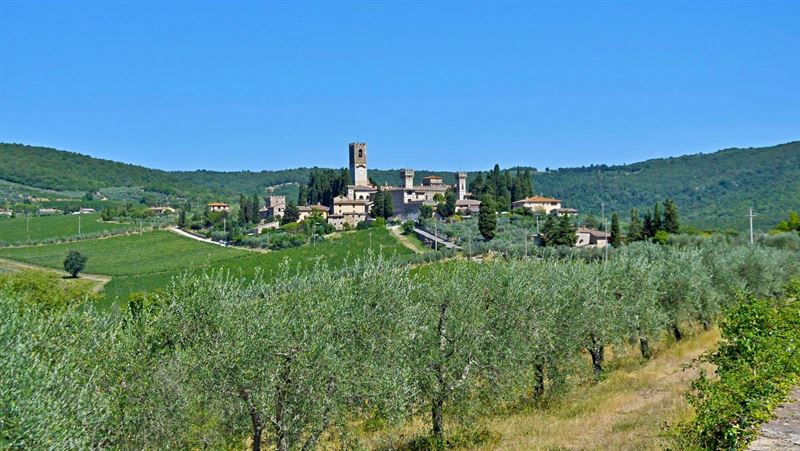
6. Ballooning over the Chianti
If weary of wine estates or in search of romantic memories, consider an amazing balloon ride over the Chianti. This works well for most people, from couples to families. Being on board a hot air balloon should provide a magical new perspective on Tuscany along with great photo opportunities.
Very probably you will float above the hills around Panzano or Castellina in Chianti and recognize Castellina’s tower and the walled medieval fortress. That said, the precise route isn’t decided until the balloon launch as it all depends on the weather, especially the winds. Given the strategic location of the launch site in Tavernelle Val di Pesa, you should be able to admire the highlights of the Chianti. This might range from Tuscan castles and Renaissance villas to aerial views of San Gimignano and the prettiest Chianti hamlets and wine estates. Certainly, there will be memorable views of silvery olive groves, vineyards and rolling hills. On a clear day, if the balloon flies high enough, you may even glimpse the Mediterranean reflecting the morning sun.
The launch site is Tavarnelle Val di Pesa, in the western Chianti, west of Panzano and San Donato in Poggio. The hot air balloon rides take off in the early morning due to the ideal air conditions found at that time. Ballooning is never cheap (around € 250 per person, with a basket holding from four to ten people) but it makes for an unforgettable experience. For more, consult Balloon in Tuscany, the operators, or the Castellina tourism consortium, Associazione Amo Castellina in Chianti.
Address: https://www.balloonintuscany.com/en/chianti-balloon-flights/
Tel: 055 8077940 -

7. San Gimignano – medieval Manhattan
San Gimignano is only 40 km south-west of Panzano so makes a worthwhile trip to see one of the medieval wonders of Tuscany. Given its spectacular setting, San Gimignano is one of the most touristy towns in Tuscany but manages to rise above the masses. With its moody medieval towers and walls, San Gimignano is one of the symbols of Tuscany. Building a lofty tower-house represented one-upmanship, medieval-style. The tower-studded skyline is one of the most spectacular sights in Tuscany. In its heyday, the city had a total of 72 towers, only 14 of which remain. Tower-houses were castle-residences serving as both warehouses and fortresses. A plague in 1348 wiped out much of the local population and the town slumbered as a backwater for centuries. The result is a medieval time capsule, even if the town is far from slumbering today. Its over-popularity and sometimes inflated prices are the only downsides but shouldn’t deter you from joining the throng.
The towers alone make a visit to this medieval time capsule worthwhile. Make time for Torre Campatelli, a true tower-house you can actually visit. This intriguing tower-house was home to the last resident of an illustrious Florentine clan. Apart from the medieval cityscape, the main sites are churches and public buildings. The best are congregated around the triangular Piazza della Cisterna and Piazza del Duomo. Here, the Palazzo Comunale is the forbidding fortress at the centre of city life since the days when Dante came on an ambassadorial visit from Florence.
Take a short walk along the city walls to la Rocca, the 14th-century fortress, before leaving town. This semi-restored fortress enjoys views over terraced gardens and olive groves winding down to the Vernaccia vineyards. The fortress is home to an enoteca, a wine-tasting experience, which traces the history of Vernaccia, the town’s most famous wine. You can even book a Vernaccia master class through the tourist office. If staying for longer, escape the crowds on a rural walk along stretches of the Via Francigena pilgrimage route outside San Gimignano. This is best booked through the tourist office. See our full San Gimignano guide for more.
Address: Museo Vernaccia
La Rocca
via della Rocca
San Gimignano
Tel: 0577 941267
Web: www.sangimignanomuseovernaccia.com -

8. Rocca delle Macie wine-tasting or cookery course
A charming wine estate-lined route leads south from Panzano to Castellina and Rocca delle Macie, which is around 5 km south of Castellina. This stellar wine estate was a tumbledown farmstead until revitalised by spaghetti western film producer Italo Zingarelli in 1973. The project fulfilled his lifelong dream of owning vineyards in the heart of Chianti Classico. The estate is now run by Sergio, his youngest son and current head of Consorzio Vino Chianti Classico, the Chianti Classico Consortium. This young, forward-looking estate produces best-selling wines. The 500-hectare estate is spread over the Castellina and Scansano areas, with four wine estates in the Chianti and a further two in the prized Morellino di Scansano wine area. As well as 200 hectares of vineyards, the estate produces excellent olive oil on its 40 hectares of olive groves.
The 93-hectare Tenuta Le Macie estate, set in the south-west part of the Chianti, forms the heart of the company and occupies the loveliest vineyards. The terraces are mainly planted with Sangiovese grapes, along with some Cabernet Sauvignon, Merlot and Colorino. As well as the prized Chianti Classico wines, you can sample some IGT Super Tuscans. Unlike more inward-looking estates, this one believes in collaborating with others, whether in San Gimignano or Orvieto, to produce particular wines. For a true taste of the region, sample one of the estate’s best Chianti Classico wines, which reveal fruity notes of blackcurrant and cherries. Either do the basic wine-tasting (of Chianti Classico or the Super Tuscans) or opt for the three-hour wine-tasting tour which includes dinner, ending with dessert and Vin Santo.
Alternatively, come back for dinner at Ristorante Riserva di Fizzano, the estate’s restaurant. If impressed, consider booking a cookery course with Aldo, the resident chef. Typical dishes to master include pici all’aglione, (stubby pasta in garlic sauce), pappa al pomodoro (thick bread and tomato soup) and typical cantuccini almond biscuits.
Address: Rocca delle Macie
Localita Le Macìe
53011
Castellina in Chianti
Tel: 0577 732236/7321
Web: www.roccadellemacie.com -

9. Art-filled Florence
Florence is only 40km from Panzano so makes a perfect outing. Despite devouring the checklist of must-see sights, steer clear of suffocating under the weight of treasures. Allow time for aimless wandering. Beyond the selfie sticks and statuary awaits a funky foodie haunt with sleek cafes, superb cooking and seriously edible markets. Florence is not fusty. Nor has the greedy city lost its gutsy Tuscan soul: traditional inns still serve earthy peasant fare, including macho steaks. Beware of trying to do too much on a day trip. Balance visits to galleries with wanderings in search of the perfect trattoria or the perfect view.
Begin in Piazza della Signoria, the city’s grandest square, with its copy of Michelangelo’s David and, beside it, the crenellated Palazzo Vecchio, with a well-presented collection. After a coffee at Rivoire, brace yourself for the Uffizi Gallery, the world’s greatest collection of Italian art. As such, the gallery is both a feast for the senses and an indigestible banquet so try and plan your visit in advance or even book a time slot online. After lunch, visit the Duomo, the biggest building for miles around. It is still Brunelleschi’s Renaissance dome that defines Florence. Out of respect for Brunelleschi’s achievement, the city forbade the construction of any building taller than the Duomo.
Clear your head in the Oltrarno, across the river Arno, where the Giardino Boboli (Boboli Gardens) act as an excellent antidote to the suffocating splendours of the Pitti Palace. The Medici dynasty created these statuary-encrusted gardens, which became the model for Italianate gardens for centuries to come. Before dinner, explore the Oltrarno neighbourhood's craft heritage on the so-called Left Bank of the city. This bohemian district is studded with stylish bars and buzzy inns interspersed with antique shops, jewellery-makers, picture-restorers and bijou art galleries. Check our Florence guide to see what appeals most. If visiting a number of museums, consider buying a Firenze Card online and also book a time slot at the Uffizi Gallery.
Web: www.firenzecard.it -
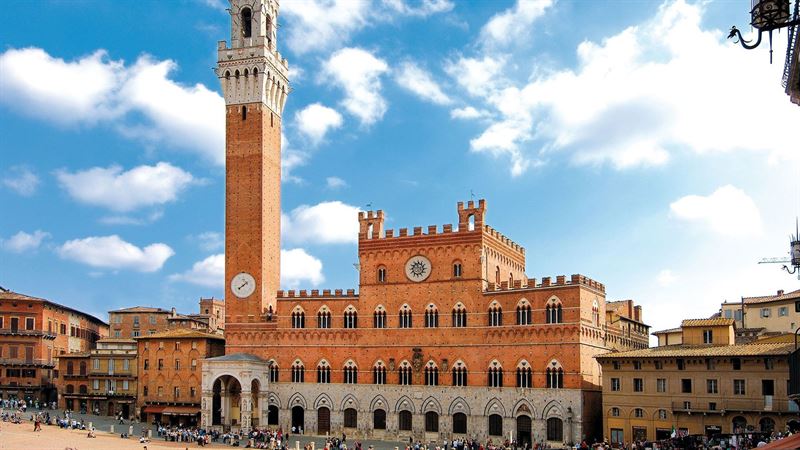
10. Day trip to Siena
Siena, which frames the southern end of the Chianti, is 35 km from Panzano so makes a magical day trip. As a Gothic city built on a human scale, Siena is effortlessly civilised and at ease with itself. All roads lead to Il Campo, the beguiling, shell-like central square, shaped like an amphitheatre. Sit at a terraced café on the sloping side of the square and spot the division of the paved surface into nine segments, recording the wise Council of Nine who governed Siena from the mid-13th century to the early 14th. Consider climbing the slender Torre del Mangia, with sultry views over a pink piazza and Siena’s rooftops, even if the views from the Cathedral rooftops are even better.
After an early lunch, a leisurely stroll leads to the Duomo, Siena’s pinnacled Gothic cathedral. The facade is a riot of green, pink and white marble, like a glorious iced cake. Siena Cathedral and the Cathedral Museum should be seen as one entity as they share several spaces. The Museum displays Pisano’s orig¬i¬nal statues for the façade along with Siena’s best-loved work, Duccio’s Maestà, the Virgin Enthroned. For many visitors, equally impressive is the rooftop walk, known as the Panorama from the Unfinished Façade. These are arguably the finest views of Siena. Facing the cathedral is the Spedale di Santa Maria della Scala, the most extraordinary building in Siena. It began as a hospital a thousand years ago and continued as one until it was reborn as a magnificent museum in recent years. In medieval times, it was always far more than a hospital. The art-studded complex embraces a former pilgrims’ hostel, an orphanage, frescoed churches and granaries.
Don’t let Siena’s art-studded museums blind you to the beauty of the backstreets. Here, the city history unfurls like a medieval banner. Walkable Siena has well-preserved walls and inviting gateways. Wind through a tangle of medieval streets and stumble across secret courtyards, fountains and surprisingly rural views. Check our Siena guide to see what appeals most.
Address: Siena tourist office
Spedale di Santa Maria della Scala
Piazza Duomo
Tel: 0577 280551
Web: www.terresiena.it -
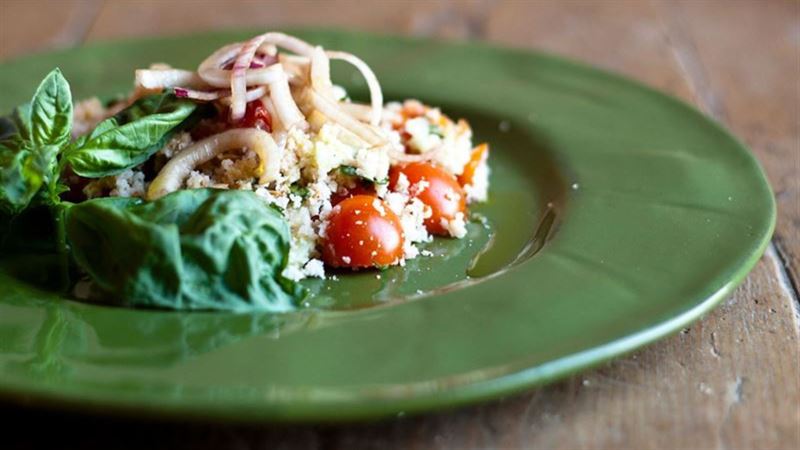
Eating & Drinking
Panzano’s stomachs belong to Dario Cecchini, a cleverly eccentric celebrity butcher. No visit to Panzano is complete without a visit to at least one of his restaurants (see our recommendations below). All are clustered round his famous butcher’s.
The hills around Panzano are blanketed with vineyards; many of the wine estates are hundreds of years old. Although chestnut was the traditional wood of the region, Chianti is now usually kept in oak barrels for several months. The smaller barrels are known as barriques; the larger are botti. Our recommended wine estates are featured in each of the individual Chianti guides.
This is just a taster to the Chianti. See our restaurant recommendations below and also see our other guides to top Chianti towns and villages, all accessed through our Destinations listings.
-
Dario Doc
Dario Doc is the cheaper, speedier, more flexible sister inn to the even meatier L’Officina della Bistecca. This place works well for a lunch on the run but is closed in the evening. Dario Doc is named after the legendary owner, who calls himself “an eighth generation butcher from head to toe.” Beef is king but Tuscan vegetarian dishes are available, too. As for the meat, opt for the quarter-pounder burger or the Chianti sushi, a clever take on beef tartare, or the baked potato topped with lard. The house wine is basic but included – or you can bring your own free of charge.
Address: Via XX Luglio 11
50022
Panzano in Chianti
Tel: 055 852020
Web: www.dariocecchini.com -
L’Officina della Bistecca
The clue is in the name: this place is a meat-lover’s dream and the temple of Florentine T-bone steak. Although not for the faint-hearted, this Tuscan steakhouse is a memorable experience and is a place beloved by top Italian chefs. Here, the butcher Dario Cecchini is the local legend. Diners sit at a long, communal table and tuck into a meat feast, prepared on an open grill. This includes a succulent 7cm-thick steak. The vast fixed menu (itemised online) costs €50 (vegetarian version too), including wine, coffee and grappa, and with two sittings, 8pm for dinner, or 1pm for lunch. It’s best to book.
Address: Via XX Luglio 11
50022
Panzano in Chianti
Tel: 055 852020
Web: www.dariocecchini.com -
Solociccia
The name provides a clue: “only flesh” is in the name in Italian. This meat-lover’s dream is one of three restaurants run by Dario Cecchini, Tuscany’s most celebrated butcher. The concept here is to offer “nose to tail eating” and a variety of meat dishes beyond the classic T-bone steak. As with L’Officina della Bistecca, there are vegetarian options, and fixed sittings, in this case at 1pm, 7pm and 9pm. It’s a five-course fixed meal for €30 (children under ten go half-price). It’s best to book.
Address: Via Chiantigiana 5
(Entrance via XX Luglio 11)
50022
Panzano in Chianti
Tel: 055 852020
Web: www.dariocecchini.com -
L’Enoteca ll Cardo
This elegant wine bar is a showcase for the Panzano wine-producers but also operates as a bistrot and tea rooms. Come and taste local wines with an inventive salad or a plate of cured meats and cheeses, including crostini with Pecorino and pears. Stop for coffee and cakes or, for a complete for a change, sample the beers, including some made by Tuscan breweries.
Address: Piazza Bucciarelli 50
50022
Panzano in Chianti
Tel: 055 852907 -
L’Osteria Le Panzanelle
Set on the road between Radda and Panzano, this is a bastion of Tuscan home-cooking. With its white-washed walls, it’s an unpretentious but utterly reliable country trattoria. Come for the home cooking, friendly service, short but seasonal menu and the extensive Tuscan wine list. Tuck into the roast rabbit, the pumpkin ravioli or any pasta in wild boar sauce. End with the panna cotta or the homemade, crunchy cantuccini biscuits, ideally dipped in Vin Santo.
Address: Localita Lucarelli
53017
Radda in Chianti
Tel: 0577 733511
Web: www.lepanzanelle.it -
L’Antica Scuderia
Just north of Panzano is Badia a Passignano, with its Benedictine abbey and Antinori wine estate. Foodies are spoilt for choice with options. If you resist the pricier, Michelin-starred Antinori gastrodome, then try this elegant, summery spot under the pergola, overlooking the vineyards. The restaurant occupies a former staging post for passing knights. The cooking is modern Tuscan, including Tuscan crostini, lamb with stuffed artichokes, or game in the form of hare, pheasants and wild boar. Grilled meat is very much on the menu, including T-bone steak. Prices range from medium to high, also depending on the wine selection. Good, inexpensive pizzas are also on offer in this child-friendly spot. You could always stock up on Antinori wines afterwards.
Address: Via di Passignano 17
Localita Badia a Passignano,
50028
Tavernelle Val di Pesa
Tel: 055 8071623
Web: www.ristorolanticascuderia.it -
La Trattoria della Fonte
Just north of Badia a Passignano, this informal, Antinori-owned inn complements the wine dynasty’s neighbouring fine-dining restaurant, L’Osteria di Passignano. Here, the mood is informal, with the solid Tuscan, mid-priced menu matching the rural setting. Typical dishes include Pienza cheeses, Tuscan cured meats, Florentine T-bone steak and typical crostini. That said, the accompanying Antinori wines can be as modest or magnificent as wished. If you’ve fallen in love with the setting, then ponder an on-site cookery class.
Address: Via Santa Maria Macerata
50026 Montefiridolfo
San Casciano in Val di Pesa
Tel: 41055 8244700
Web: www.fontedeimedici.com -

Shopping
Shopping is fairly limited but still a pleasurable experience in Panzano, especially for Chianti foodstuffs and, of course, cured meats. The Sunday morning market sells everything from fruit and vegetables to cheese, roast chicken, shoes and clothes. For more choice head to neighbouring Greve.
-
L’Accademia del Buon Gusto
This is a wine shop with a difference thanks to its entertaining and effervescent owner. The lasting feeling is one of meeting a friend who cares passionately about both wine and Tuscany and wishes to share his knowledge. Multilingual Stefano Salvadori is a gracious, old-school host who entertains and informs about the wine wonderland that is Chianti. Stefano offers free tastings of Tuscan wines, olive oils and vinegars, all the while waxing lyrical about Chianti wines, Slow Food, Tuscan life, traditions, art, politics, the universe and everything. The wine shop is not called `The Academy of Good Taste’ by chance. Visitors leave uplifted and usually laden down with both wine and new knowledge.
Address: Piazza Riscasoli 7
50022
Panzano in Chianti
Tel: 055 856 0159
Web: www.accademiadelbuongusto.com -
Il Forno Castellacci
This bakery produces a good range of biscuits. Its best-known are the cantucci from Panzano. These cantucci include the classic version of the crunchy almond biscuits but also variants, including ones made with pistachio, coffee or chocolate.
Address: Via Giovanni da Verrazzano 27
50022
Panzano in Chianti -
Il Birrificcio Math
In neighbouring San Donato, shop for tasty beers, as a change from wine. The beers range from the light Blanche to Belgian-style ales, all hand-crafted artisanal beers, brewed locally. Try the amusingly named `Alky Donkey.’
Address: Via Senese 148
San Donato in Poggio
Tavernelle Val di Pesa
50028
Tel: (+39) 338 4584387
Web: www.birrificiomath.com -
La Bottega di Passignano
In the ancient abbey of Badia a Passignano just north-west of Panzano do a wine-tasting and shop for other Antinori produce, such as the wine dynasty’s olive oil. The Bottega is a showcase to Antinori wines, along with upmarket foodstuffs from Procacci, the renowned Florentine delicatessen that is now owned by the Antinori. Tasty souvenirs include Procacci jams and truffled delicacies. You can also sample and buy wines from a range of Antinori estates, from solid Chianti Classico wines to acclaimed, pricey Super Tuscans.
Address: Via di Passignano 33
Badia a Passignano
Localita Badia di Passignano
50028
Tavernelle Val di Pesa
Tel: 055 8071278
Web: www.osteriadipassignano.com -
Luxury designer outlets
For a complete change of scene, designer shopping fans could head to the luxury outlets in the Valdarno area. The Mall Firenze is a thirty-minute drive east from Florence, on the Pontassieve road. There’s also a direct shuttle bus there from Siena. After browsing the designer brands, end your shopping experience in the Mall’s Gucci café and restaurant.
Address: The Mall, Via Europa 8
50066
Leccio Reggello
Tel: 055 8657775
Web: www.themall.it -
Parking
There is free parking at the entrance to Panzano, which leads directly to the centro storico (medieval centre). Panzano makes more sense if approached from the north, from Greve or Florence. From this approach, you see both the appealing modern square of Piazza Gastone Bucciarelli and the array of small shops and restaurants that border the neighbouring alleys.
Coming from Florence, follow the Chiantigiana (SR 222) road as it winds around Strada in Chianti and Greve. It leads to the appealing square of Piazza Gastone Bucciarelli in the heart of hamlet. If you carry on for a kilometre and turn into via della Conca d’Oro you will find plenty of public parking and easy access to the medieval walled part of Panzano.
Coming from Siena, take the SR222 and follow signs for Castellina in Chianti and then Greve. The via della Conca d’Oro is on the left and is indicated by blue parking signs. This car park leads you directly into the centro storico. If you try to park closer to Piazza Gastone Bucciarelli, parking is very limited so less advisable.
Most Tuscan towns operate a strict ZTL system, a Limited Traffic Zone. This means that the Centro Storico (historic centre) is essentially closed to traffic, particularly for non-residents. Cars will need to be left outside the walls. That said, the Chianti towns are small so present far less trouble than such cities as Florence and Siena. Parking tips: for advice on individual Chianti places, please see our individual Destination guides, including those on Greve, Panzano, Radda, Gaiole and Castelnuovo Beradenga.
Advice on ZTLs: You may see other cars crossing the ZTL boundary (Limited Traffic Zone) and assume you can proceed. Not so. The drivers crossing into the ZTL zone will probably be locals and have residents’ permits. Visitors do not so are liable to fines. Zones are monitored by cameras, so tickets are issued immediately and automatically, as soon as (and each time) the car crosses the ZTL boundary.
-
Getting Around
The Chianti can be delightful driving country. Its appeal lies in the rolling countryside, array of vineyards and olive groves, relatively quiet roads, and the mix of small medieval towns. Public transport in the Chianti is rather sporadic so car hire makes the most sense if you want to explore the area properly. Driving in the Chianti can be deeply enjoyable experience, especially with a detailed map or GPS navigator to hand. For a great day out, try a customised tour with Chianti Taxi.
Greve, the main gateway from the north, lies on the SR222, commonly known as the Chiantigiana, about 30 km south of Florence and 40 km north of Siena. From Greve, the scenic Chiantigiana meanders through the Chianti, passing through most of the typical villages. This is a charming route to take by day. At night, however, you might encounter wild boars, porcupines or deer crossing the road.
From Florence and the Chiantigiana head towards Greve, then Panzano until you reach Castellina. It is about 20 km from Greve. Or take the Florence-Siena Raccordo Autostradale highway (known as the RA) taking the San Donato in Poggio exit, and then follow the SP101, which becomes the SP76.
From Siena, leave town on the Florence-Siena Raccordo Autostradale highway (known as the RA), taking the Badesse exit for the SP 119, which becomes the SR222, the Chiantigiana. Or leave Siena and take the SR2, which becomes the SR222 until Castellina in Chianti.
By private tour: Chianti Taxi, a reliable Panzano-based transport service offers day-long private tours around the Chianti and beyond. These are customised tours that can take in everything from olive oil mills and wine estates to Pecorino farms and hand-painted ceramics. With his comfortable minivan, owner Daniele Mogni has the inside track on what you can do in the Chianti. It’s worth splashing out for a day so you can relax and drink your fill at the wine estates.
Chianti Taxi. T: (+39) 389 8160050 & www.chiantitaxi.com
The Chianti by train: this is not an easy place to reach by rail. The train service barely touches Chianti's attractions, which is part of the reason why the area is so peaceful. The main Chianti station is Castellina in Chianti, which is on the Siena-Florence line but you need to change trains at Empoli.
The Chianti by bus: Buses connect Florence to Greve and Panzano but end there. These buses often provide a more useful service than the trains but the confusing 365 bus service (T: 800373760, freephone only & www.acvbus.it) still means that bus schedules are not always convenient and also operate a limited service on Sunday. Frequent buses also connect Panzano and Greve (Piazza Trento) on a 15-minute journey. Buses also connect Siena and Castellina: a Tiemme bus service (T: 0577 204111 & www.tiemmespa.it) operates around 7 services a day. Buses also connect Castellina and Radda: a Tiemme bus service (T: 0577 204111 & www.tiemmespa.it). Buses also connect Siena and Gaiole: a Tiemme bus service (T: 0577 204111 & www.tiemmespa.it).
On your bike: The Chianti is a lovely place to explore by bike. The combination of romantic Tuscan scenery and challenging gravel roads is what makes it enjoyable. The cycling races in the region also attract big crowds. Whether as a spectator or a participant, L’Eroica is worth following. This renowned amateur event that allows cyclists from around the world to experience the region while riding classic bikes












